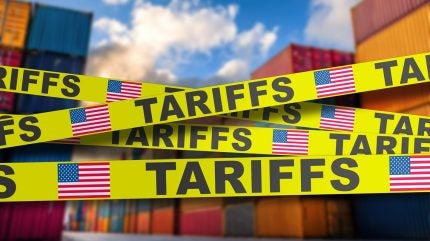
This sentiment persists even in light of ongoing advancements in employment and income levels.
Kleinhenz says: “The possibility of a US recession in the near future has increased due to rising trade tensions and other economic factors, but it hasn’t happened yet.”

Discover B2B Marketing That Performs
Combine business intelligence and editorial excellence to reach engaged professionals across 36 leading media platforms.
As of April, federal reserve indexes that track state-level economic activity showed improvements in 43 states and declines in only three, a far cry from the widespread negative growth that would signal a recession.
“With so much uncertainty surrounding the economy in the past few months, I’m not sure anyone can predict the storm path of tariffs and their likely impact. The wide range of uncertainty has introduced a high level of unpredictability and has raised the probability of a significantly slower pace for the US economy. Hiring, unemployment, spending and inflation data continue in the right direction, but at a slower pace. Everyone is worried, and a lot of people have recession on their minds,” Kleinhenz said.
This observation follows as NRF released its issue of Monthly Economic Review, which highlighted that the economy is at a critical juncture after concluding 2024 with a 2.8% annual increase in GDP and diminishing inflation.
The first quarter saw GDP shrink by an annualised rate of 0.3%, ending a streak of 11 consecutive quarters of growth.

US Tariffs are shifting - will you react or anticipate?
Don’t let policy changes catch you off guard. Stay proactive with real-time data and expert analysis.
By GlobalDataThis downturn has sparked recession fears; however, Kleinhenz believes that current data does not align with typical recession patterns.
He suggested that headline GDP figures might exaggerate economic frailties, influenced by a first-quarter surge in imports as consumers and businesses anticipated tariffs announced in April.
In contrast, personal spending growth exceeded expectations at 1.8% year-over-year during the first quarter. Consumer spending on goods climbed by 4.1% year-over-year in March, and service expenditures increased by 6.3%.
Post-tariff announcements, job market performance has surpassed expectations with 177,00 new jobs added in April and an unchanged unemployment rate of 4.2%.
Disposable personal income rose by 4% year-over-year as of March.
In terms of inflation, the Personal Consumption Expenditures Price Index indicated a 2.3% increase over the previous year in March. The Employment Cost Index for wages and employment costs was up 3.6% annually in the first quarter, outpacing inflation but marking the slowest rise in four years.
Despite signs of a robust economy, the Fed’s Beige Book reported widespread concern over international trade policy across all 12 Federal Reserve districts.
Kleinhenz said: “Well-established economic theory is very clear that tariffs raise prices for consumers, distort investment and reduce the competitiveness of firms that use non-US parts, materials and other inputs.
“I remain concerned that the sporadic implementation of tariffs announced one day, postponed the next and maybe — or maybe not — finally imposed later is weighing on business investment and hiring, likely leading to a weak labour market that will be harmful. People are on an economic cusp, and when people worry about their jobs, their anxiety often triggers a slowdown in consumer spending.”
Navigate the shifting tariff landscape with real-time data and market-leading analysis. Request a free demo for GlobalData’s Strategic Intelligence here.





